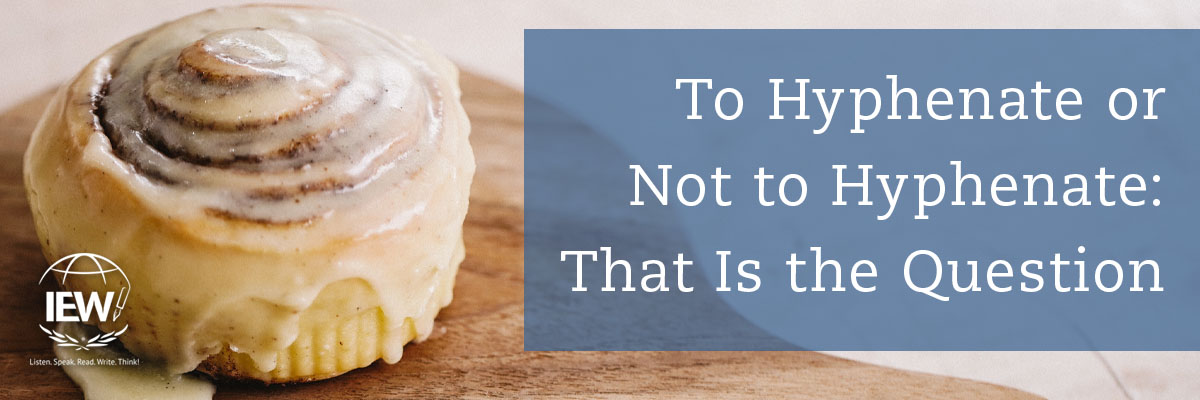The humble hyphen ( ‐ ) is a subdued punctuation mark indicated by a short dash line. It serves a number of purposes grammatically, many of which we will take a look at in this piece. If you have ever wondered if you should hyphenate a word or not, the first place to check is in your dictionary. This blog post will hopefully help you as well. Keep in mind that these rules are not exhaustive and also that the various style guides have different standards, so when in doubt about whether to hyphenate or not, consider consulting the style guide you are following for additional direction.
While modern word processing has largely relegated this first use of hyphens obsolete, it remains relevant for anyone who writes compositions by hand. It is the matter of breaking words at the end of a line of text. For longer, multisyllabic words that won’t fit within the allotted space, break the word up with a hyphen between the syllables, doing your best to avoid leaving just one letter either at the end or the beginning of a line. Thus, happily would be divided as hap-pi-ly. Summon would be divided as sum-mon. Sandbox would be divided as sand-box. If you aren’t certain where the break is, consult your dictionary.
Hyphens are also paired with certain prefixes and suffixes. While the broad majority of affixes are attached to a word without any hyphenation, there are a few that do take the punctuation mark. Examples of hyphenated prefixes include self- (self-sufficient) and great- (great-grandmother). A common hyphenated suffix is -elect (governor-elect). With regard to affixes, avoid having double and triple letters (anti-inflammatory and fall-like). Exceptions to this rule are the prefixes re- and pre-, which are frequently paired with base words that begin with <e> (reelect and preestablish).Most importantly, consider clarity. For example, re-mark, which means “to mark again,” differs in meaning from remark, which means “comment.”
Compounding words also utilize hyphens in some instances. These can get tricky. Some compound words are simply stuck together (sandbox), and others are kept as separate words (apple tree). The other way words are compounded is with hyphens (long-term and jack-in-the-box). Compound adjectives are somewhat unique in that it is common to hyphenate them in front of the noun they describe (pet-friendly hotel) whereas the same adjectives can frequently be written as separate words when they follow the noun. (The family searched along the route for a hotel that was pet friendly.) Hyphenate for clarity when needed. Again, check a dictionary. Think about this. If you received some much needed advice from your mentor, would that be the same as receiving some much-needed advice?
One area where hyphens are not used is to connect an -ly adverb with an adjective. In this case, however, you do need to be aware of -ly adverb imposters, which are actually adjectives in disguise. In this way a friendly-looking dog is legal because friendly is an adjective; however, a generously-apportioned dessert is not correct because generously is an adverb. If these nuances are tricky for you, look in a dictionary. Also, consider checking out Fix It! Grammar, which does a great job of teaching ways to distinguish between the two parts of speech.
When you consult the dictionary, your word or term might be open (health care), a hyphenated compound (health-care provider), or closed (healthcare). Words that are always hyphenated will be found in a dictionary. Here’s the catch! The English language is constantly in flux. Therefore, different dictionaries often show different forms. Remember when the term was Web site? Now we almost always see website. Some usages are legal in both ways: best seller or bestseller. Whichever one you choose, be consistent within the piece you are writing.
Lastly, one other area where hyphens are utilized is when numbers are expressed in writing. The rule to follow for this is to hyphenate fractions and compound numbers from twenty-one to ninety-nine. For example, I might have already eaten two-thirds of my cinnamon roll this morning. Or instead (if I were a more health-minded person) I might decide to preserve twenty-two pints of blueberries later this afternoon.
Whew! Who knew the humble hyphen could be so intricate? I hope this post helped to demystify how this common punctuation mark is used. I also hope that you will feel more confident as you implement it within your own writing as well as when you teach your students about it. Now, to finish that cinnamon roll!
|
Jennifer Mauser has always loved reading and writing and received a B.A. in English from the University of Kansas in 1991. Once she and her husband had children, they decided to homeschool, and she put all her training to use in the home. In addition to homeschooling her children, Jennifer teaches IEW classes out of her home, coaches budding writers via email, and tutors students who struggle with dyslexia. |


